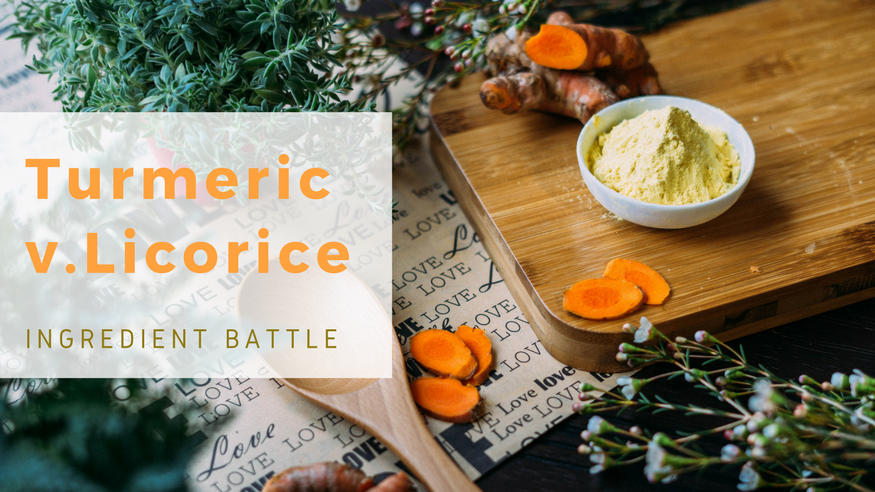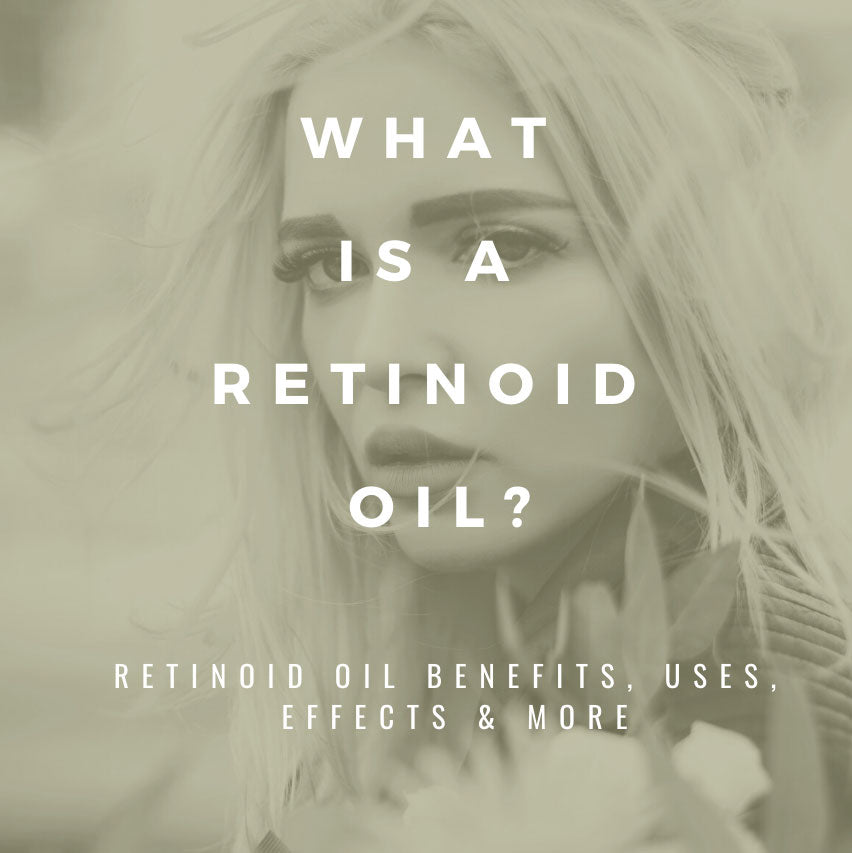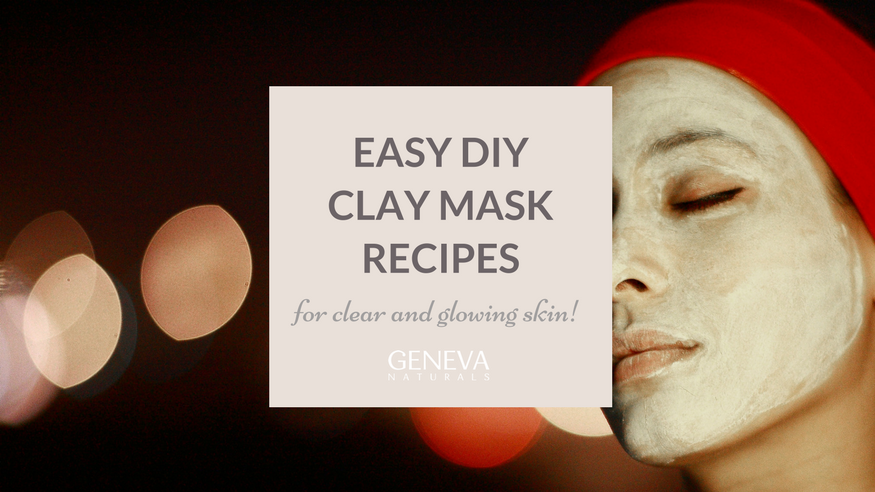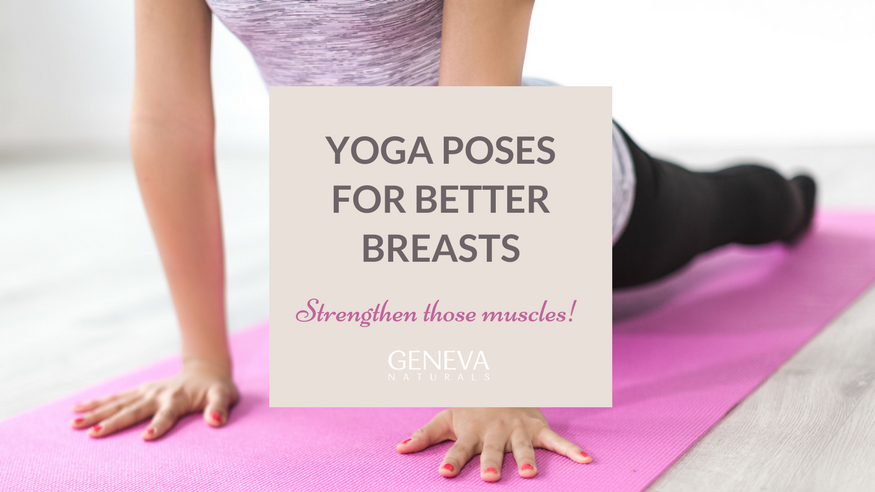Ingredient Battle: Turmeric vs. Licorice

Turmeric
What is it?
Turmeric (Curcuma longa) is both a name of a plant that grows in southern Asia and the fleshy roots of that plant. There are many chemical compounds found in turmeric, with curcumin as the most active.
Why do people love it?
For 4,000 years, turmeric roots have been dried and ground to be used as a dye, a spice, and for a variety of other purposes. Turmeric is one of the most frequently mentioned herbs used medicinally because it has so many healing properties.
Benefits
Antioxidant
Antioxidants scavenge molecules in the body called free radicals that damage cell membranes and can even tamper with DNA. As a powerful antioxidant, turmeric fights free radicals and prevents the damage they would cause, including the appearance of premature aging of the skin. Antioxidants help the skin to avoid wrinkles, uneven skin tone, dark circles and bags under the eyes. They are also effective in reducing the risk of various diseases such as cardiovascular disease, osteoarthritis, and cancer.

Anti-inflammatory
The active compound of turmeric, curcumin, is a powerful anti-inflammatory. When compared to over-the-counter medications used to reduce inflammation, curcumin is often more effective and has less side effects. Anti-inflammatories help to reduce the risk of disease such as cancer, arthritis, and chronic pain. They also help to reduce puffiness and bags under the eyes and reduce the swelling that often accompanies acne, eczema, and other skin conditions.
Pain Reducer and Heal Wounds
Turmeric is effective in speeding up wound healing and decreasing acne scars. It is also helpful at reducing back pain, headaches, arthritis pain, and other chronic pain. Because it has very little to no known side effects, turmeric is often used as a substitute for ibuprofen and other pain medications.
How to use it?
Turmeric is often used as a spice or a supplement. It can be added to tea, soup, rice, or tossed on vegetables. You can also use it topically as it is an ingredient in various do-it-yourself and store-bought skin care products such as face masks, acne gels, and soaps. For more inspiration on how to use turmeric, check out this video from POPSUGAR Beauty.
Licorice
What is it?
Licorice (Glycyrrhiza glabra) is an herb that is native to southern Europe and parts of Asia. Like turmeric, it is the roots of the plant that are used for flavor and their medicinal value.
Why do people love it?
The roots of the herb are sweet, about 30 to 50 times sweeter than sugar, making licorice root an excellent sweetener. Licorice also contains many compounds such as flavonoids, polyphenols, and triterpenoids that provide many health and skin care benefits.
Benefits
Anti-Inflammatory
Licorice contains anti-inflammatory compounds such as flavonoids, coumarins, and stilbenoids. As a potent anti-inflammatory, licorice helps to reduce edema (swelling), treat ulcers and leaky gut, relieve sore throat, reduce various diseases, prevent bags under eyes, and reduce pain in muscles and joints. Licorice is also used to alleviate inflammation caused from eczema, acne, and other skin conditions.
Fades Dark Spots
Darkened skin can accompany scars and blemishes. Licorice extract, when used consistently, can fade dark spots and lighten skin. Licorice contains an active ingredient called glabridin that helps to reduce hyper pigmentation that can come from overexposure to UV rays. Glabridin also contains flavonoids that lighten the skin while keeping enzymes from darkening damaged skin.

Reduce Signs of Aging Skin
Licorice contains powerful antioxidants that protect the skin against environmental pollutants and stressors. The compound glabridin found in licorice helps to reduce the appearance of age spots, dark circles beneath the eyes, uneven skin tone, and wrinkles. Licorice extract is great for all skin types, especially sensitive skin and oily skin, because it is gentle and helps to balance oil levels. It also helps treat skin disorders such as psoriasis, rashes, and itchy skin.
How to use it?
Licorice can be used internally and used as a sweetener or supplement; however, it should be taken in small quantities. Licorice extract can also be added to skin care products such as face masks, creams, salves, and other natural skin care products.
Do you use licorice or turmeric in your cooking? Comment below with your favorite delicious recipes!
Try it out!
Also in Geneva Naturals

What Is A Retinoid Oil? Retinoid Oil Benefits, Uses, Effects & More

DIY Clay Mask Recipes for Clear Skin




